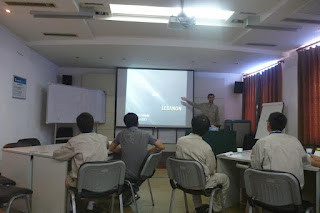I gave my presentation few days ago, last Monday 22nd August. It went really well and I enjoyed it especially because I was speaking of both Lebanon and UAE as they both are major in my life.
Four new members joined my team which makes us 10 (including myself). My team members are relatively younger (21-28 years) than Saeed's teammates and their curiosity in asking questions was clearly different. My teammates asked more about touristic places and costs of visiting Burj Khalifa or Burj al Arab and so forth. When I told them it would cost around 400 Dhs (approx. 700Yuans) to get into Burj Khalifa they had wide-open eyes and said "Youssef give us this presentation and it is more than enough to enjoy looking at the pictures!!" This is because 700 Yuans in China is a big deal of money. We actually as foreign interns earn 1860Yuans a month, and the entree level Chinese employees earn about 3000-4000 Yuan. So you could imagine their response. They loved the nature of Lebanon and that we can go around the whole country in less than 5 hours! They also asked questions like:
When I was presenting, the electricity in the room got cut off and the charger of my laptop stopped working. Luckily we are in China; the next day we went with Saeed's team, who are always helping us in everything especially Ms. Li, and I got the same charger for 40Yuans (around 22 Dhs)!! Of course its Chinese and of low quality but it would serve for some time! Getting 10 of these chargers is still cheaper than getting an original one for more than 200 Dhs.
Saeed did not have the chance to present his powerpoint presentation because the projector was not working so he got the chance of improvising on the whiteboard! It was really good and the team was so big and so interested that they asked for more than an hour.
Saeed's team asked more serious questions like:


Overall, although we had to show most of the presentation on the laptop screen since the electricity in the room was getting cut, giving the presentation was delightful and was a perfect chance for practicing in front of a distinct new audience.
(click to download the presentation directly - 12.3MB)
Four new members joined my team which makes us 10 (including myself). My team members are relatively younger (21-28 years) than Saeed's teammates and their curiosity in asking questions was clearly different. My teammates asked more about touristic places and costs of visiting Burj Khalifa or Burj al Arab and so forth. When I told them it would cost around 400 Dhs (approx. 700Yuans) to get into Burj Khalifa they had wide-open eyes and said "Youssef give us this presentation and it is more than enough to enjoy looking at the pictures!!" This is because 700 Yuans in China is a big deal of money. We actually as foreign interns earn 1860Yuans a month, and the entree level Chinese employees earn about 3000-4000 Yuan. So you could imagine their response. They loved the nature of Lebanon and that we can go around the whole country in less than 5 hours! They also asked questions like:
- Shouldn't women also cover their face in UAE?
- How can we live in the extremely grilling weather!
When I was presenting, the electricity in the room got cut off and the charger of my laptop stopped working. Luckily we are in China; the next day we went with Saeed's team, who are always helping us in everything especially Ms. Li, and I got the same charger for 40Yuans (around 22 Dhs)!! Of course its Chinese and of low quality but it would serve for some time! Getting 10 of these chargers is still cheaper than getting an original one for more than 200 Dhs.
Saeed did not have the chance to present his powerpoint presentation because the projector was not working so he got the chance of improvising on the whiteboard! It was really good and the team was so big and so interested that they asked for more than an hour.
Saeed's team asked more serious questions like:
- Are men and women paid equally
- How are weddings celebrated
- What is the average income in UAE
- What ages do couples get married


Overall, although we had to show most of the presentation on the laptop screen since the electricity in the room was getting cut, giving the presentation was delightful and was a perfect chance for practicing in front of a distinct new audience.






































